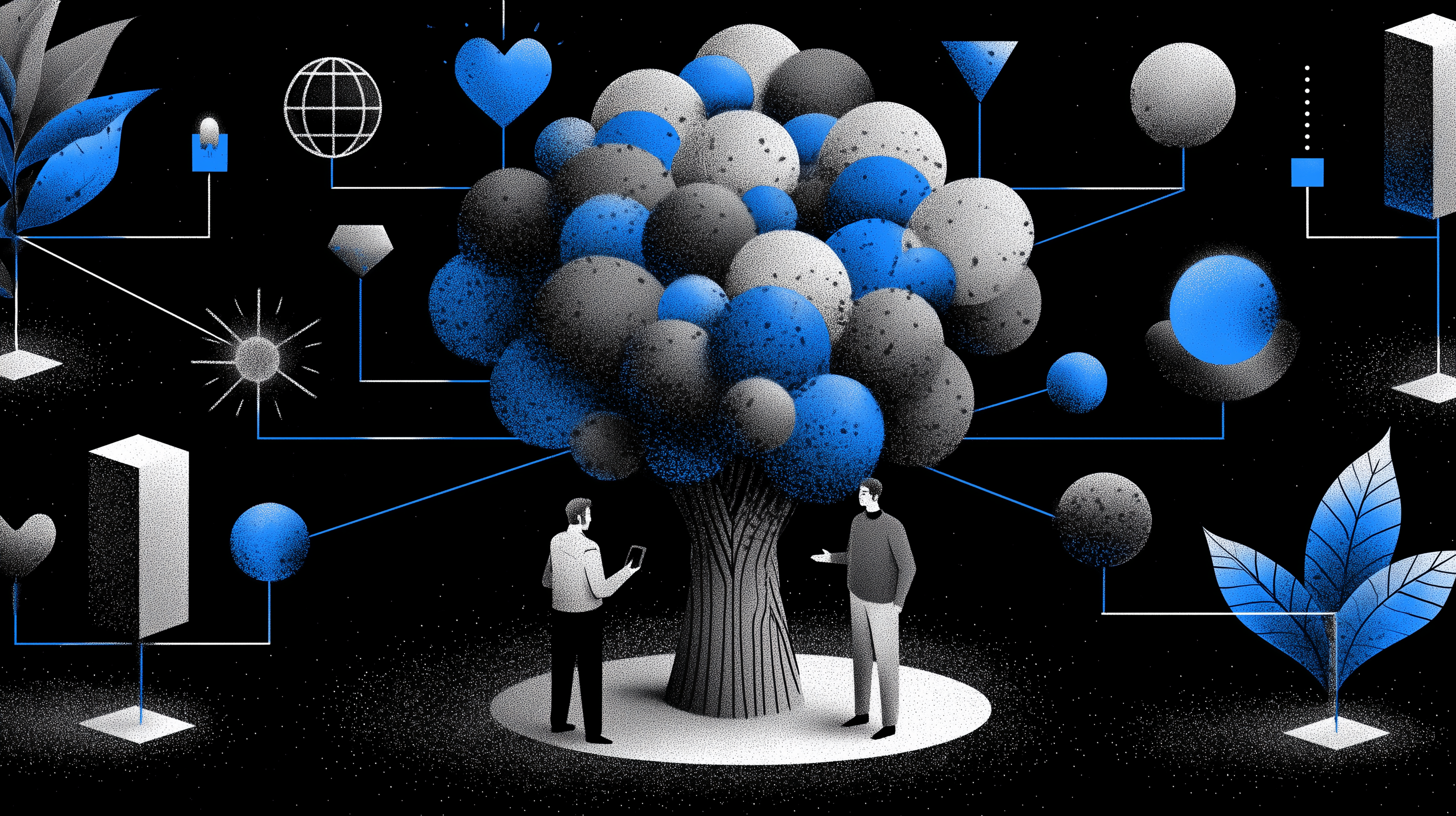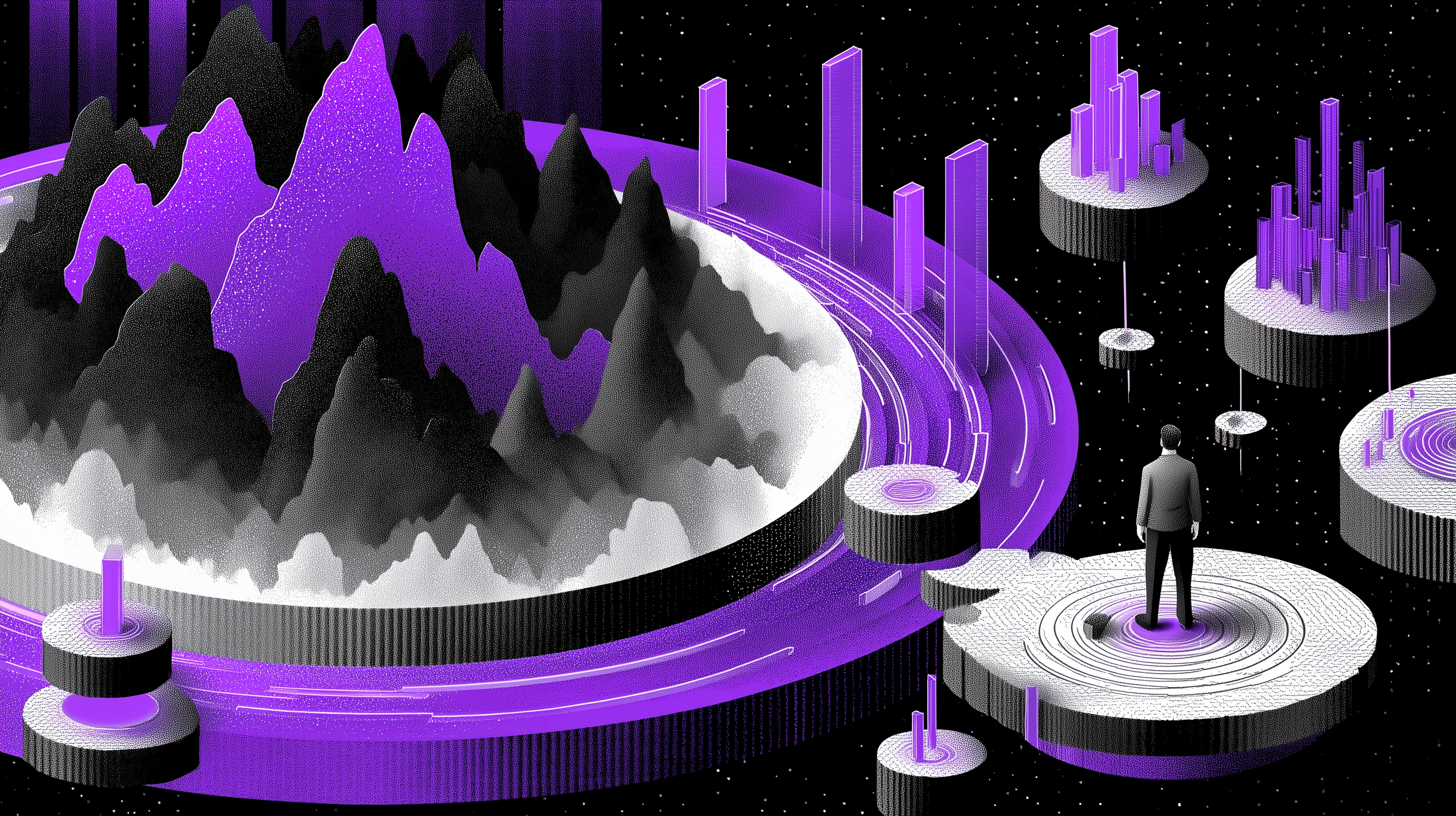Brand ecosystems: how marketers build connected and sustainable strategies

Discover How to Build a Sustainable Brand Ecosystem with Collaborative Workflows and a Connected Marketing Strategy
Why Brands Must Rethink Their Strategy as an Ecosystem
For a long time, marketing strategies were built in silos — isolated campaigns, fragmented messages, disconnected channels.
Today, in a world where audiences expect consistency, transparency, and continuity, this model has reached its limits. Successful brands no longer simply communicate; they orchestrate ecosystems where every action, piece of content, and partner contributes to shared value.
According to McKinsey (2024), ecosystems will account for nearly 30% of global revenue by 2030, representing more than $80 trillion.
This transformation does not concern only large enterprises — SMEs and agencies are also embracing collaborative and sustainable approaches, built on mutualization and technology.
A brand ecosystem is based on a simple principle: connecting internal stakeholders (marketing teams, creatives, product management) and external ones (partners, distributors, clients) around a shared mission.
It’s not about tools anymore, but about systemic coherence a strategic alignment supported by integrated workflows.
In a well-designed brand ecosystem, every element from the creative brief to the final social media post fits into a cohesive structure.
This article offers a practical guide to understanding, building, and managing a sustainable brand ecosystem.
What Is a Brand Ecosystem?
A brand ecosystem refers to the network of actors, tools, and interactions that orbit around a brand and collectively create lasting value.
Unlike traditional marketing, based on successive and isolated campaigns, an ecosystem is systemic: every interaction between the brand, its customers, partners, and teams reinforces the whole.
The Core Components of a Brand Ecosystem
- Internal teams (marketing, communication, product)
- External partners (agencies, suppliers, distributors)
- Customer and user communities
- Technology that facilitates information flow and content creation
This approach strengthens coherence, accelerates collaboration, and builds a continuous experience across all touchpoints.
It is now a strategic lever in an environment where transparency and responsibility have become essential expectations.
“An ecosystem brand is more than a product portfolio. It is a connected network of products, services, and experiences that together create and share value.”
— Vivaldi Group & WARC, Building Ecosystem Brands Playbook (2024)
Practical Focus – The Collaborative Dimension
In practice, brands increasingly rely on collaborative management platforms to synchronize projects and ensure brand consistency.
Platforms such as MTM, for example, help orchestrate these processes by centralizing workflows, validations, and deliverable tracking.
These digital environments have become the backbone of modern brand ecosystems.
Why Build a Sustainable Brand Ecosystem?
A Major Economic Transformation
Ecosystems are now a key growth driver for organizations.
According to McKinsey, the networked economy could represent up to 30% of the global economy by 2030 an estimated $70–100 trillion value pool.
The Growing Importance of Partner Strategies
The Foundry Partner Marketing 2024 report reveals that 37% of marketing budgets are dedicated to partner-related activities, and 62% of organizations plan to increase these investments.
Global Coherence, Local Adaptability
A sustainable brand ecosystem balances a centralized vision with localized relevance.
Brands must ensure their values and messages remain consistent while adapting to cultural and social specificities in each market.
This adaptability often called glocalization helps preserve global coherence while strengthening proximity with audiences.
The Structural Role of Collaborative Technology
Collaborative platforms make it possible to connect teams, centralize content, and maintain coherence across the entire ecosystem.
Solutions like MTM illustrate this principle: they help organizations coordinate creative projects, validate deliverables across partners, and monitor performance over time.
Practical Guide: The 5 Steps to Building a Brand Ecosystem
Step 1 – Identify the Core Proposition
Every ecosystem starts with a core value: mission, promise, and purpose.
This foundation defines all partnerships, narratives, and experiences.
Step 2 – Map All Touchpoints
Visualize every brand–audience interaction to identify inconsistencies and design a seamless experience.
This process must consider local cultural differences to maintain coherence without uniformity.
Step 3 – Select the Right Partners
Choose partners who share your vision and align with your goals.
According to WARC (2024), co-creation from the design stage increases perceived brand coherence by 24%.
Step 4 – Centralize and Orchestrate via a Collaborative Platform
Collaborative platforms such as MTM become the ecosystem’s backbone centralizing deliverables, managing approvals, and tracking project performance.
Step 5 – Measure, Adjust, and Sustain
A brand ecosystem is a living organism.
It must be monitored over time: coherence, workflow efficiency, partner satisfaction.
Analytics dashboards help marketers steer evolution and maintain performance.
Best Practices for Sustaining a Brand Ecosystem Over Time
Maintain Coherence
Document brand guidelines and synchronize teams regularly.
A consistent tone enhances credibility and semantic visibility.
Encourage Collaboration and Transparency
Sharing information and documenting projects fosters trust and continuity.
Collaborative platforms like MTM facilitate this transparency.
Track Long-Term Indicators
Measure process stability: regularity, recurrence, and coherence.
Analytical dashboards support long-term monitoring.
Strengthen Governance
Define roles, responsibilities, and decision-making channels.
Clear governance creates stability and predictability.
Promote Continuous Learning
Capitalize on experience and update workflows frequently.
Versioning systems make it easier to build collective progress.
Conclusion: Thinking in Ecosystems to Build for the Long Term
In a constantly changing marketing landscape, the most successful brands are not those that communicate the loudest but those that orchestrate the most effectively.
A well-designed brand ecosystem transforms communication into a sustainable network of relationships built on coherence, collaboration, and trust.
Thinking in ecosystems means shifting:
- from campaigns to continuous presence,
- from scattered coordination to unified governance,
- from product-centricity to shared value creation.
Collaborative platforms like MTM integrated discreetly within production workflows act as strategic infrastructures.
They ensure project continuity, deliverable traceability, and team alignment around shared objectives.
A brand’s longevity no longer depends solely on awareness but on its ability to create and maintain a cohesive, connected, and evolving ecosystem.
The future of marketing lies not in isolated campaigns but in interconnected systems where every actor, content, and interaction contributes to a unified dynamic.
Understanding and Managing a Brand Ecosystem
1. What is a brand ecosystem?
It’s a network of interconnected actors, processes, and tools that create value around a shared mission.
2. Why adopt an ecosystem approach?
To strengthen coherence, loyalty, and long-term marketing performance.
3. How can a company start building its ecosystem?
By identifying its core mission, mapping touchpoints, and selecting aligned partners.
4. What role do collaborative platforms play?
They ensure coordination, validation, and continuous measurement across all projects.
5. How can brand ecosystems stay sustainable over time?
By monitoring coherence, consolidating governance, and learning continuously from feedback.
Sources
Other Posts

Where should applied ai intervene to maximize the impact of marketing campaigns ?

How AI agentizes market data to write strategic pre-creation recommendations.

